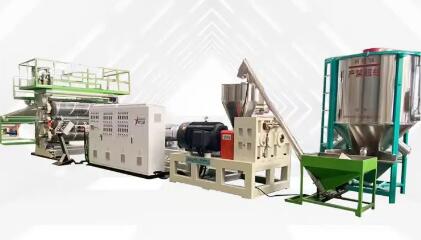Unraveling the Basic Principle of the ABS Plastic Sheet Extrusion Machine
2024-04-26
In the world of plastics manufacturing, the ABS Plastic Sheet Extrusion Machine stands as a crucial piece of equipment. Understanding its basic principle is essential for effective operation and maintaining the quality of the extruded sheets. Let's delve into the core working mechanism of this machine.
The ABS Plastic Sheet Extrusion Machine operates on the principle of continuous plastic extrusion. The process begins with the feeding of ABS plastic pellets into the hopper of the extruder. These pellets are then gradually moved towards the heating zone by a rotating screw or auger inside the extruder barrel.
As the pellets progress through the extruder, they encounter increasing temperatures, causing them to soften and melt. The screw's design and rotation facilitate the melting process, ensuring uniform heating and mixing of the plastic material.
Once the plastic reaches a molten state, it is pushed through a die at the end of the extruder. The die is shaped according to the desired thickness and width of the plastic sheet. As the molten plastic exits the die, it cools down rapidly, solidifying into a continuous sheet.
The extruded sheet is then pulled through a series of rollers and cooling devices to ensure uniform thickness and further solidification. The speed of the rollers and the temperature of the cooling devices can be adjusted to control the thickness and quality of the final product.
Throughout the extrusion process, various factors come into play, including the temperature profile within the extruder, the screw's speed and design, and the die's configuration. These factors must be carefully controlled to achieve consistent and high-quality ABS plastic sheets.
In summary, the basic principle of the ABS Plastic Sheet Extrusion Machine lies in the continuous melting and shaping of ABS plastic material through a controlled extrusion process. Understanding and mastering this principle is crucial for maximizing the machine's efficiency and producing top-notch plastic sheets.



